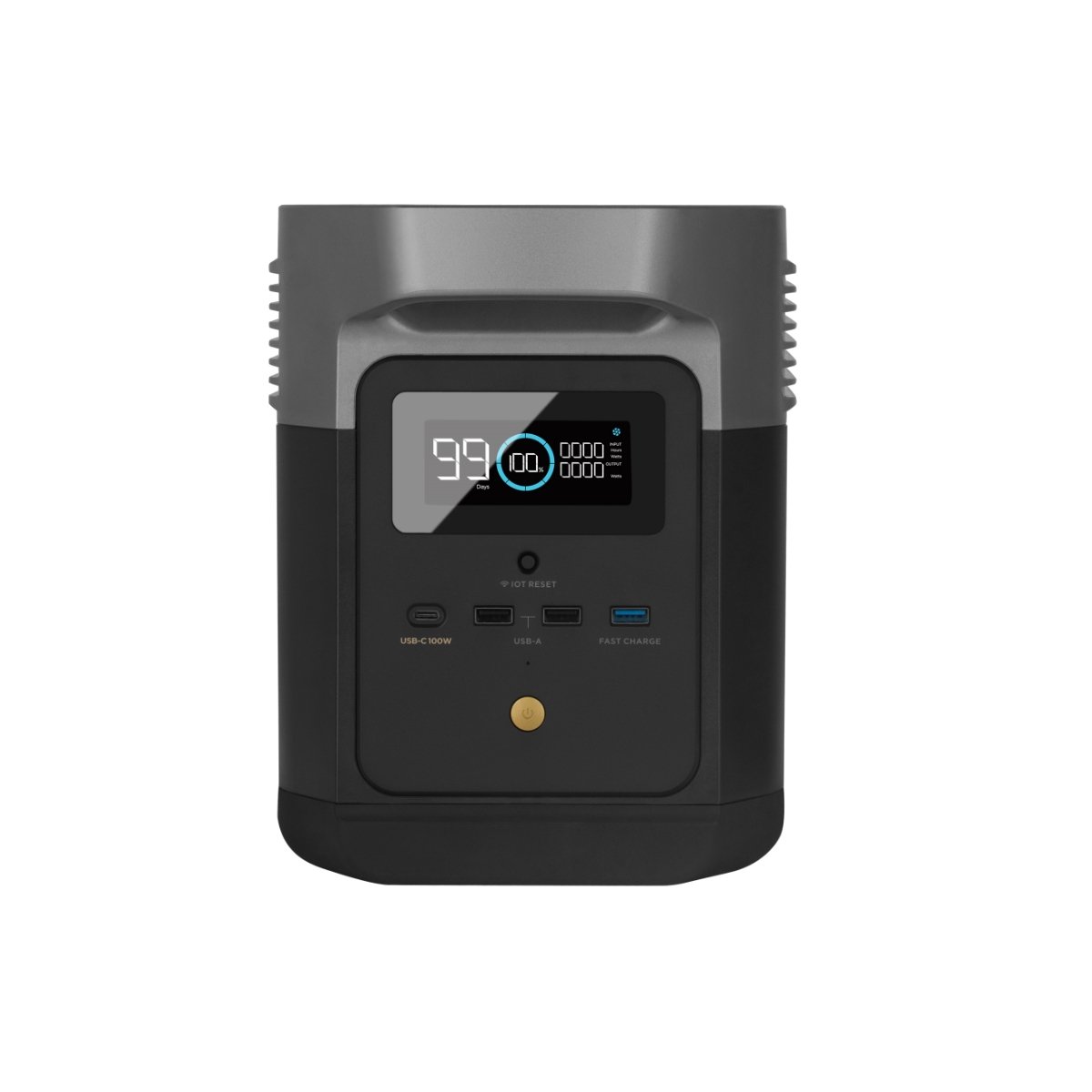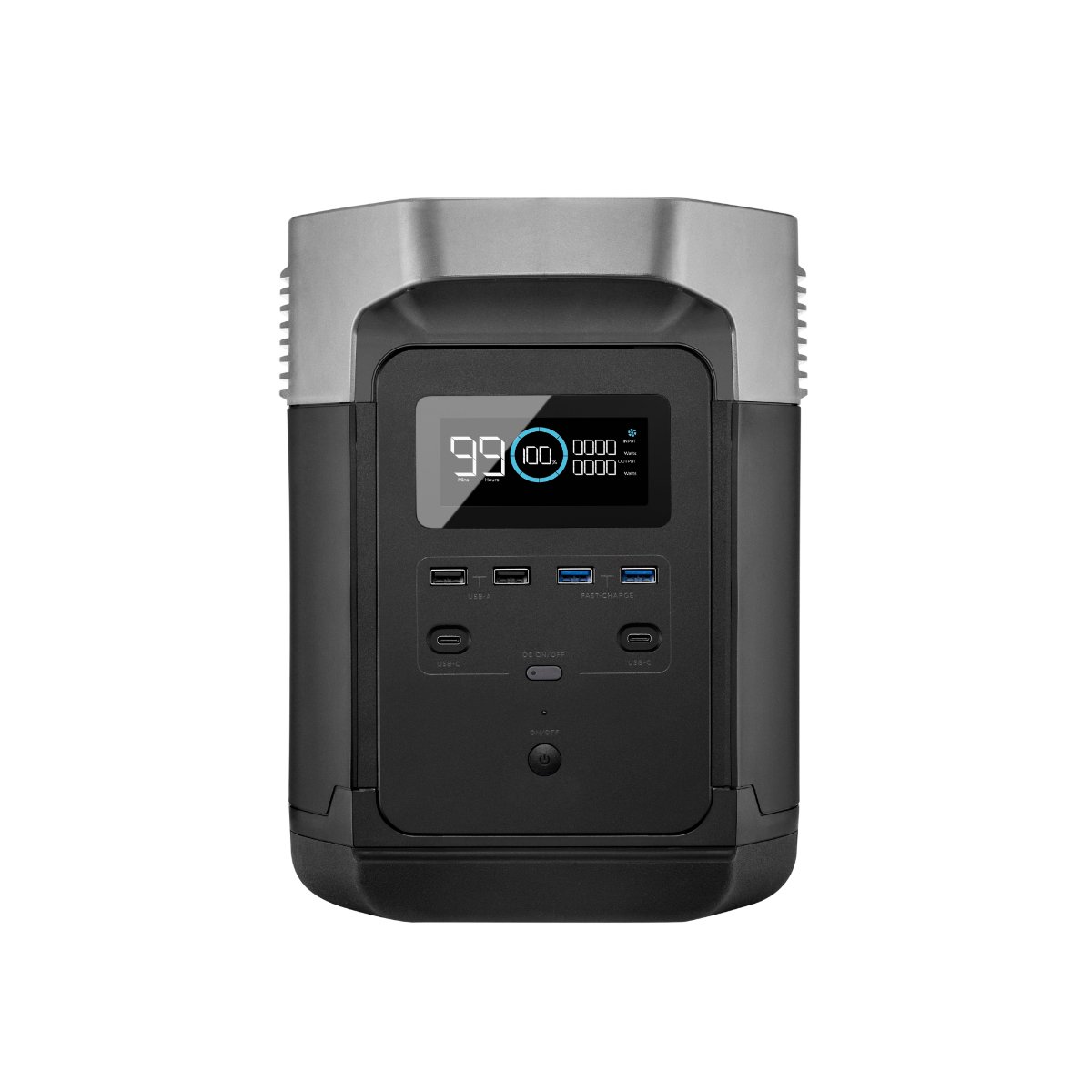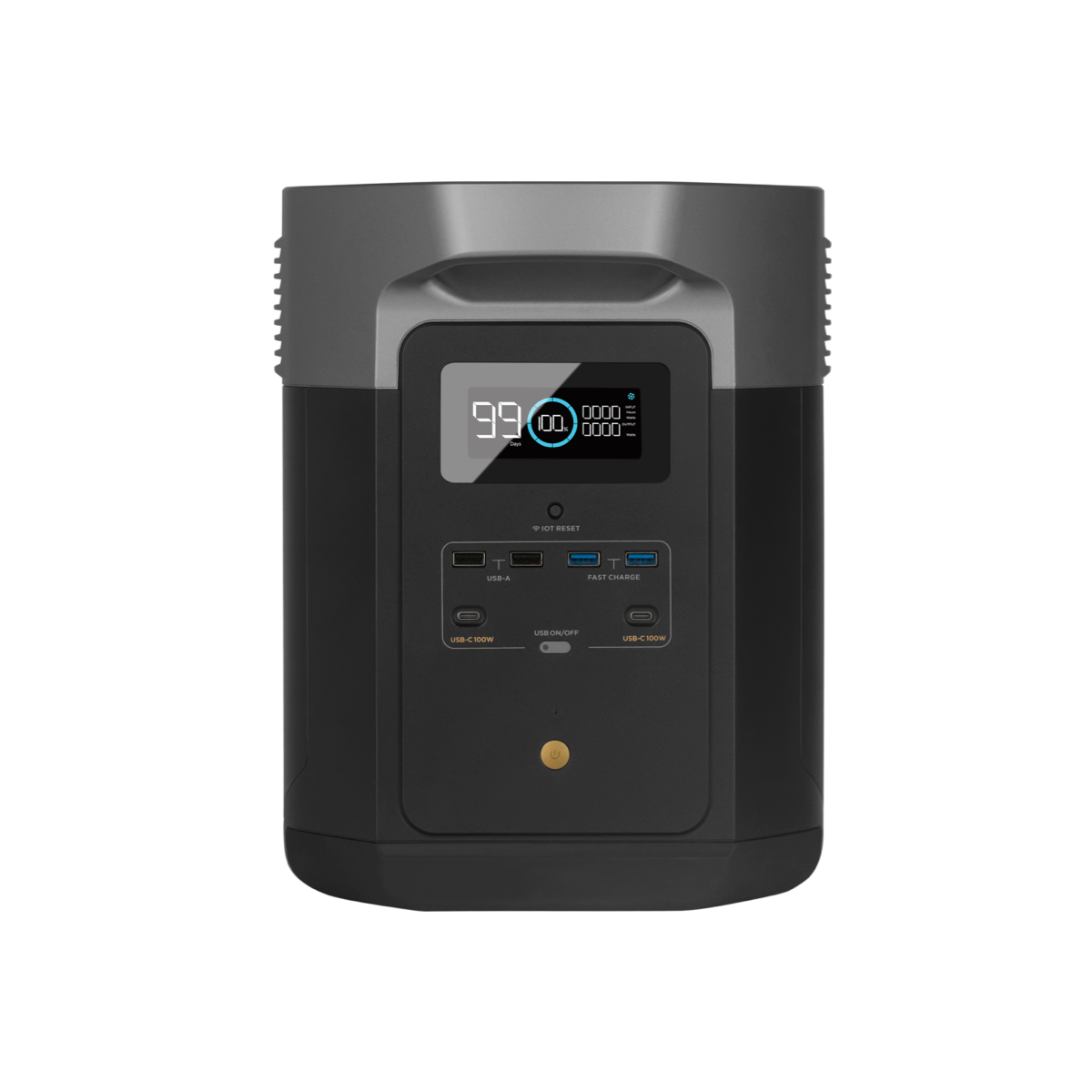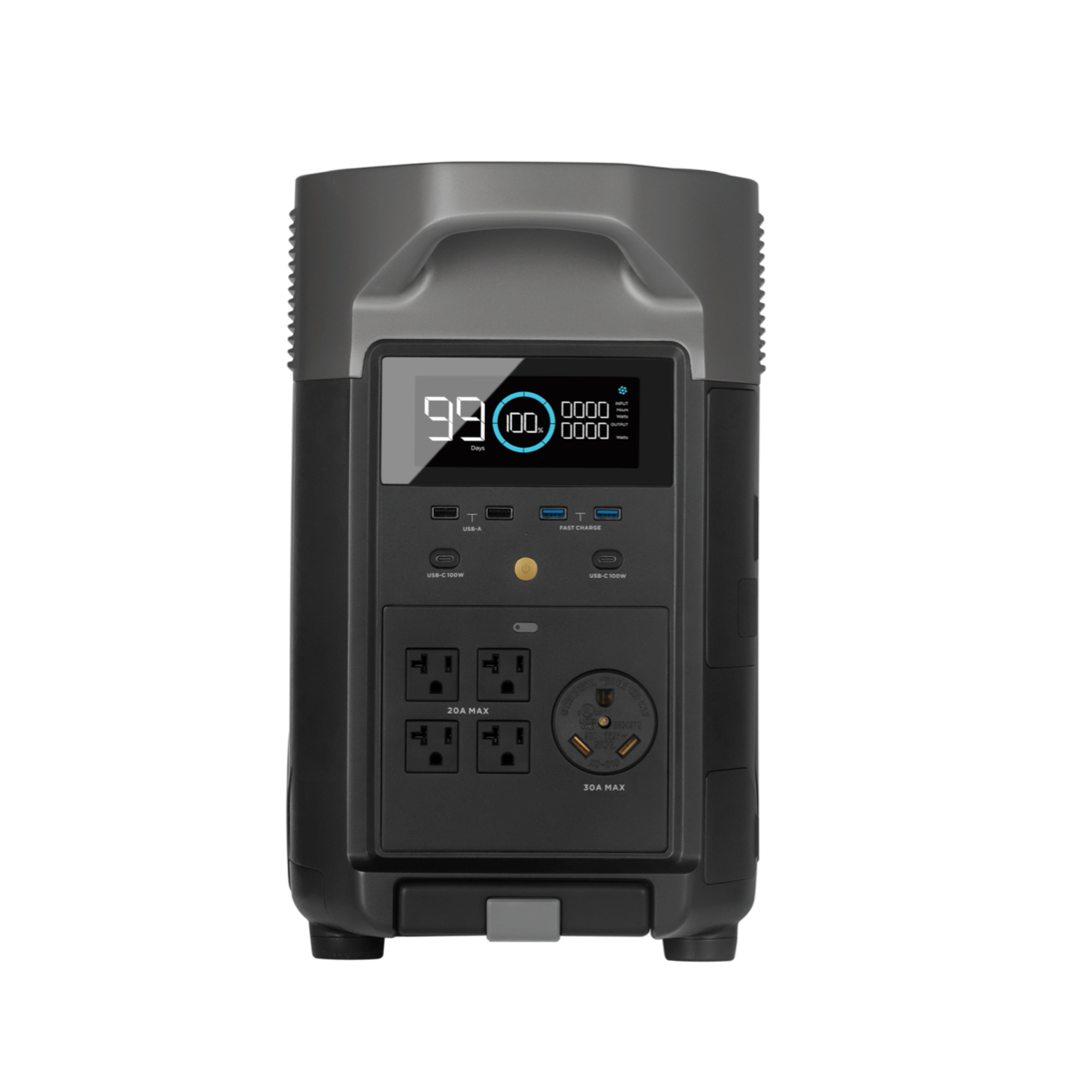Jan 31st 2022: With snow storms whipping across the eastern coast of the US, blackouts are inbound for thousands of Americans. Read this article so you can prepare.
February 2021 was a wake-up call for America’s grid system, but these changes don’t happen overnight – or even in a year. Despite states’ best efforts, a recent report of the nation’s infrastructure suggests there may be more of the same coming if winter storms get bad enough, especially in Texas where a third of the energy demanded could be left out in the cold. Portable power stations plus solar panels can be a lifeline when the grid goes down.
Will there be another blackout in 2022 like the Texas deep freeze?
Potentially, but of course, we won’t know when or where because massive power outages can occur when production doesn’t keep up with demand or the physical infrastructure fails. With crazy winter storms cranking up consumption and droughts lowering hydropower production, only time will tell what 2022 has in store. One report estimates that over a third of Texas’ power needs won’t be met if winter weather gets severe enough. The forces of nature also put several other states at risk of not having adequate power. The duration of outages seems to be getting longer as the US’s power grid ages, so it’s possible history will repeat itself in 2022 – though not necessarily in the same place.
What SAIDI can tell us about power outages
We won’t try to predict the next big outage, but will give you some idea of who’s at risk. The System Average Interruption Duration Index (SAIDI) is a metric for grid reliability and is calculated by adding up how long each customer spent without power and then dividing it by the total number of customers. Let’s say, Littleton Power Company has 100 customers, and 10 of those lost power for 3 hours. 30 cumulative hours/100 total customers mean customers were without power for 0.3 hours on average. It would be nice if the numbers in America were really that low.
While the average American only experiences one outage per year, they’re usually for extended durations. In 2020, customers across the States averaged 7½ hours without power, with Louisiana seeing ten times that. The map below adds up the average duration customers faced each year from 2013 to 2020 and gives you an idea of which states have the worst outages.

Shortest outages (2013–2020)
Arizona – 11½ hours
Washington D.C. – 12¼ hours
Nevada – 12½ hours
Nebraska – 14½ hours
North Dakota – 15½ hours
Longest outages (2013–2020)
Maine – 142 hours
Louisiana – 124 hours
West Virginia – 92 hours
Alabama – 86 hours
Connecticut – 82 hours

Data source: https://www.eia.gov/electricity/annual/html/epa_11_04.html
Worst times for outages
Maine 2017 – Wind storm (42 hours)
Florida 2017 – Hurricane Irma (45 hours)
North Carolina 2018 – Hurricane Florence (31 hours)
Connecticut 2020 – Tropical Storm Isaias (50 hours)
Alabama 2020 – Multiple gulf hurricanes (55 hours)
Louisiana 2020 – Multiple gulf hurricanes (72 hours)
How to not repeat 2021 in 2022
Store and even make power with a portable power station in the event that 2022’s winter weather is more than the grid bargained for. They’re a battery with outlets for personal devices and even home appliances and can charge from a wall outlet, car, or solar panel.
Before a blackout
Store energy from the grid in a battery with enough capacity to power essential devices and appliances for several hours. Batteries with around 500Wh of capacity will be enough for keeping personal devices charged, and those with around 3000Wh are better suited for several hours of using home appliances conservatively.

EcoFlow RIVER 2 Max
| 512Wh Capacity |
| 500W AC Output |

EcoFlow DELTA Pro
| 3.6-25kWh Capacity |
| 3600-7200W AC Output |
During a blackout
It’s important to note that portable power stations don’t make energy and rely on planning ahead and carefully monitoring the battery level. If it worries you that a blackout could drag on and on, there are three ways to keep your home powered.
Gas generator: People are switching to portable power stations to get away from gas generators, but for those that already have a generator, the two can work together to avoid constant noise. Use stored power from a portable power station’s battery, and if the lights aren’t back on by the time it’s about to die, fire up the generator to power your house while recharging a portable power station. EcoFlow Smart Generator is made for just that. Emergency power when you’re all out of charging methods.
Solar Panel: Better yet, be completely quiet, exhaust-free, and unreliant with solar panels. Create power during the day, use stored power through the night.
Recharge elsewhere: For those on a budget not wanting to get into gas generators and solar panels, it’s always possible to recharge your portable power station somewhere that does have power. Blackouts are localized, and perhaps people down the street or a few blocks away have power even though you don’t. If it’s safe to drive somewhere with power, EcoFlow portable power stations can fully recharge in about an hour and a half, which is great for rolling blackouts too.
What is the difference between a portable power station and a solar generator?
Without a formal definition in place, these two terms get thrown around a lot. An easy way is to think of a solar generator as a portable power station plus a portable solar panel. This makes sense because it’s generating its own energy rather than relying on stored battery power. Other than that, they’re pretty much the same thing. All EcoFlow portable power stations can be used as solar generators, which is a great way to stay powered throughout blackouts without drawing attention.
There’ll never be a better time to try out solar.
Solar panels still aren’t a normal part of most people’s lives, but if there was ever a time to try them out, it would be during winter power outages.
Dipping your toe in the water: Portable solar panels used with solar generators don’t need to be installed: just plug them into the portable power station. You can start making solar as soon as your shipment arrives without waiting in line for someone to install rooftop panels.
Energy when you need it: Putting solar panels out in your yard or balcony may feel like a hobby, but when the power goes out, they’ll feel like liferafts of civilized living.
Avoid gouging: The cost of solar panels seems like a lot without considering the savings, and for most days of the year it may only be several cents per day. During blackouts, energy prices can skyrocket as suppliers try to cut back on consumption.
Alleviate the grid: Powering with off-grid energy is not only great for you, it’s great for everyone. If people used more solar during wintery weather, power systems wouldn’t be so overwhelmed.
Cold is better: Bonus benefit! Solar panels actually perform better in colder conditions. EcoFlow solar panels can be used down to −4°F, but keep the battery unit indoors for best performance.
Best Batteries for Blackouts

EcoFlow DELTA mini
| Capacity 882Wh |
| Phone (11W) 62 Charges |
| Laptop 60W 12 Charges |
| Mini Fridge 12 Hours |
| Blender (500W) 1.5 Hours |
| Coffee Machine (1000W) 0.7 Hours |
| Air Fryer (1500W) 0.5 Hours |

EcoFlow DELTA
| Capacity 1260Wh |
| Phone (11W) 104 Charges |
| Laptop 60W 19 Charges |
| Mini Fridge 19 Hours |
| Blender (500W) 2.1 Hours |
| Coffee Machine (1000W) 1.1 Hours |
| Air Fryer (1500W) 0.7 Hours |

EcoFlow DELTA Max
| Capacity 2016Wh |
| Phone (11W) 175 Charges |
| Laptop 60W 32 Charges |
| Mini Fridge 33 Hours |
| Blender (500W) 3.5 Hours |
| Coffee Machine (1000W) 1.9 Hours |
| Air Fryer (1500W) 1.2 Hours |

EcoFlow DELTA Pro
| Capacity 3600Wh |
| Phone (11W) 313 Charges |
| Laptop 60W 57 Charges |
| Mini Fridge 57 Hours |
| Blender (500W) 6.5 Hours |
| Coffee Machine (1000W) 3.3 Hours |
| Air Fryer (1500W) 2.2 Hours |


Wann ist Smart Home Panel mit EU Lizens lieferbar?
Bitte um schnelle Antwort!
Danke
Joachim Gütter
Hallo, bitte beachten Sie, dass das Smart Home Panel bereits auf dem EU-Markt erhältlich ist, bitte besuchen Sie unsere offizielle EU-Website unter: https://eu.ecoflow.com/